- Home
- Science
- Environment
- Here's The Hard Work That Goes Into Catching Your Lobster
Here's The Hard Work That Goes Into Catching Your Lobster
Around 4:30 a.m., sternman Tim Lovett leaves Holyoke Wharf in South Portland to pick up captain Craig Stewart from Long Island in Casco Bay, near Portland.

By 6 a.m., Craig is at the helm. He begins zigzagging in and out of buoys to locate his traps.

Each lobster boat is limited to 800 traps as part of Maine law. A portion of the traps are hauled and set each day.
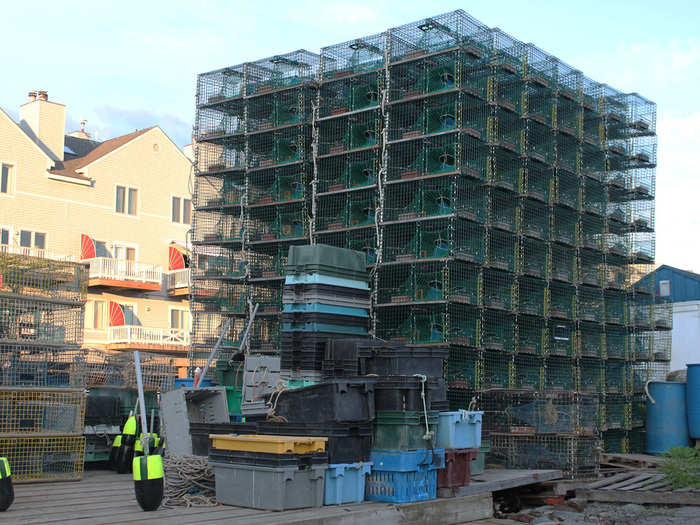
The lobster trap has not changed much in the last two hundred years. Although today plastic-coated metal traps have mostly replaced traditional wooden ones, the design is basically the same.
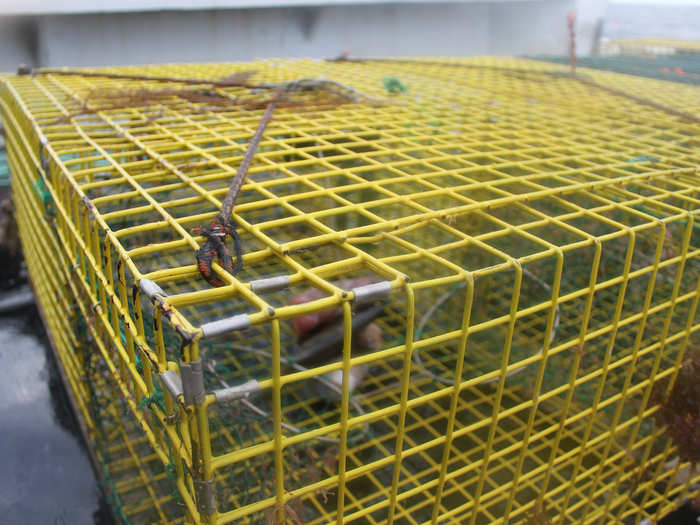
A funnel-shaped entrance to the lobster trap is designed to be one-way. But undersized lobsters can crawl out through smaller exit holes.
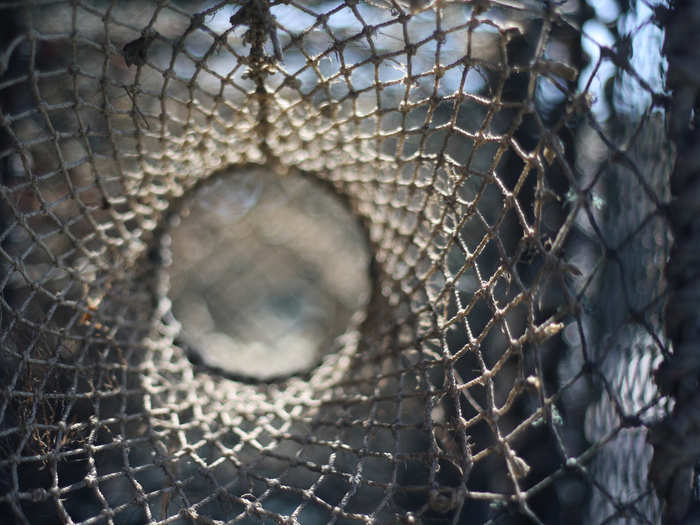
As another precaution, traps must have biodegradable hatches at the top so the lobsters can escape if the trap is lost in the ocean.
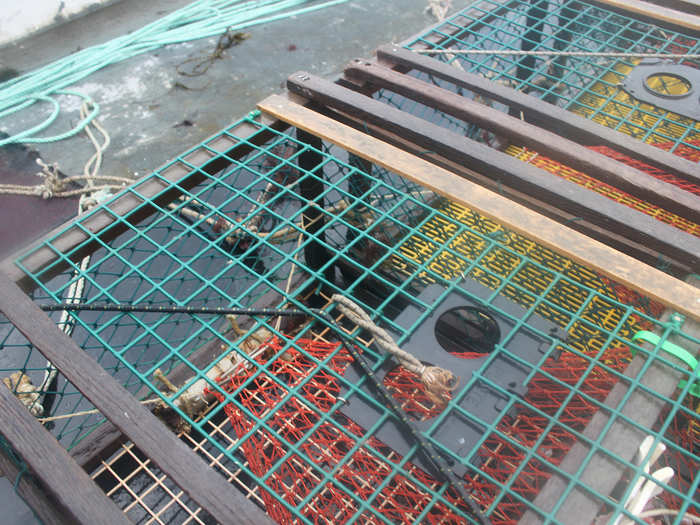
The traps are connected by a line of rope. There are typically eight traps along a stringer, which is attached to a buoy with a unique color and pattern for easy identification.

Craig's colors are orange, yellow, and white. The buoys are also marked with a State-registered license number.

In order to limit the number of commercial lobster licenses, Maine requires lobstermen over the age of 18 to complete a two-year apprenticeship with an experienced harvester before they can captain their own boat. However, it can take years, if not decades, for somebody to get a license since several lobstermen must retire before a new person enters the fishery. Tim, 35, expects to be on the waiting list for at least seven to 10 years once he complete his apprenticeship with Craig this year.

So what does a sternman do? While Craig navigates the water, keeping track of his buoys and deciding where to lower his pots, Tim is busy prepping the bait.
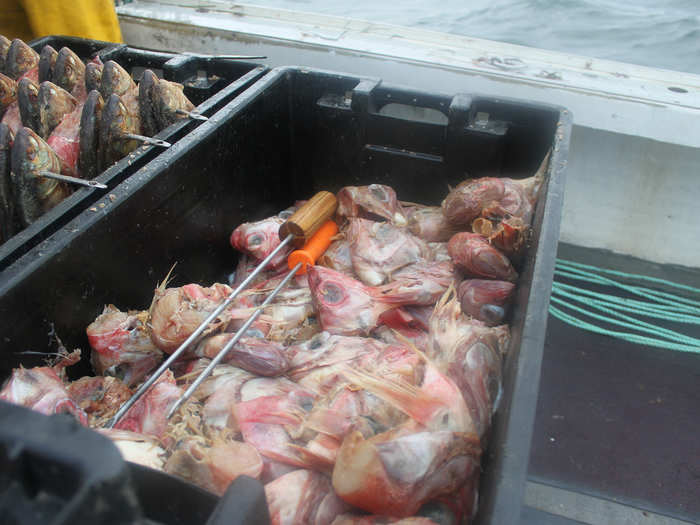
He slides redfish and porgies onto a bait needle, which look like large metal skewers with an eyelet at the end. The needle is used to thread the bait onto a string inside the lobster trap.

Every time Craig reaches one of his bright orange buoys, he reaches over the side of the boat and grabs the line with a hook.
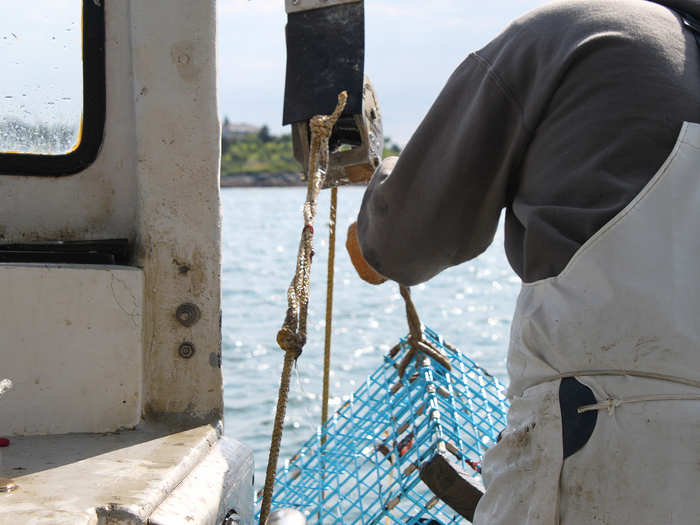
The buoy is immediately plunged into a barrel of hot water to boil away any algae and other sea gunk that clings to the surface.
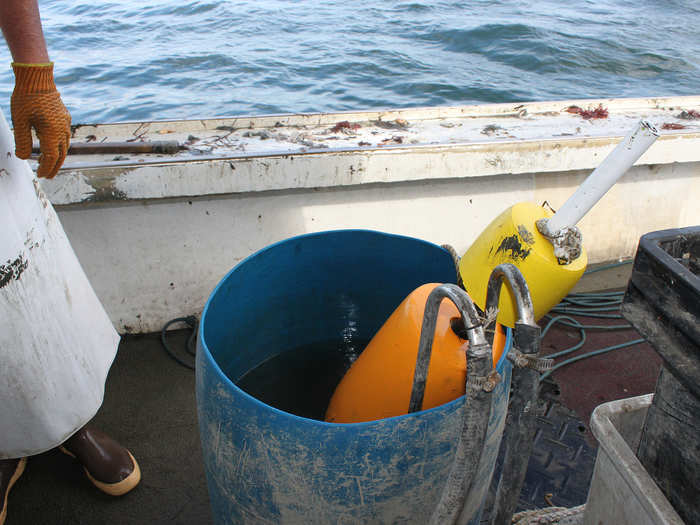
The line is then fed through a winch, and one at a time the traps are dragged out of the water with a hydraulic hauler.
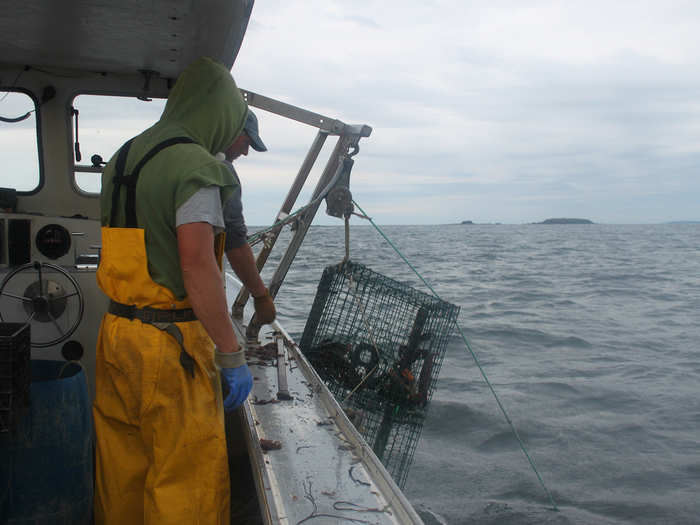
Once on the boat, Tim lifts the trap's hatch and both men sift through the catch. Every day is different. Last week the traps were brimming with juicy lobsters, Craig says. Today, they're just scraping by.
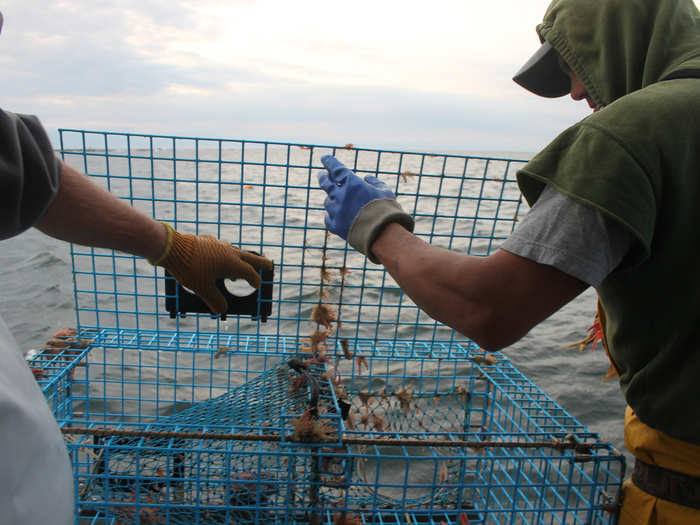
The American lobster (Homarus americanus) or Maine lobster, distinguished by two giant front claws that are filled with meat, is found in the northwest Atlantic Ocean, stretching from the Canadian province of Labrador down to North Carolina. But the crustaceans are most plentiful in the Gulf of Maine, known for its rocky shores and snug harbors, giving the cold-water creatures plenty of spots to burrow and hide.

The majority of lobsters in Maine are caught between late June and late December, with the peak fishing time during the summer. The Maine fishery is particularly famous for its soft-shell lobsters, which are most abundant early in the season between July and October when lobsters are active and molting.
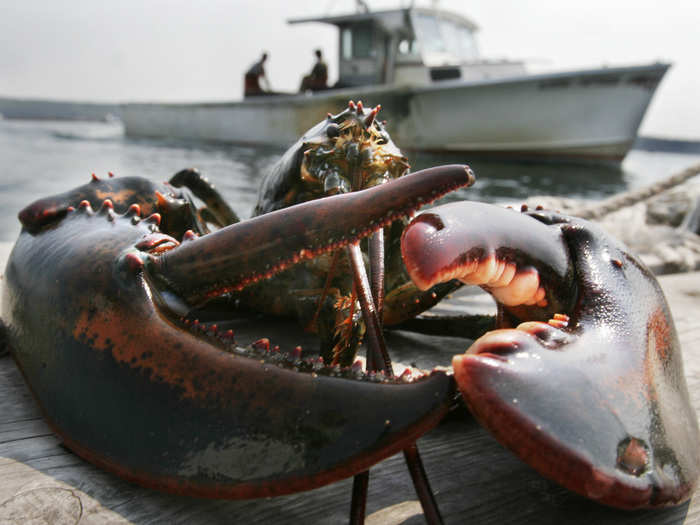
Lobsters must shed their shell in order to grow. A soft-shell lobster, or "shedder," refers to a lobster that has just crawled out of its old shell. It will take about a month for the shell to become very hard. In a side-by-side comparison, you'll notice that the hard-shell lobster (right) has darker claws than its newly-molted counterpart.
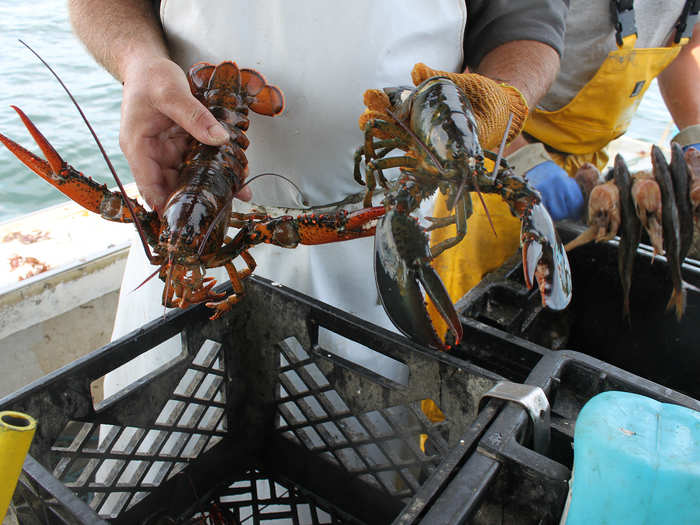
Many people prefer the soft-shell lobster; their shells are easy to break apart and the meat is said to be more tender and sweet than the meat from a hard-shelled lobster. However, they are less valuable to a dealer because they cannot be shipped due their fragility.
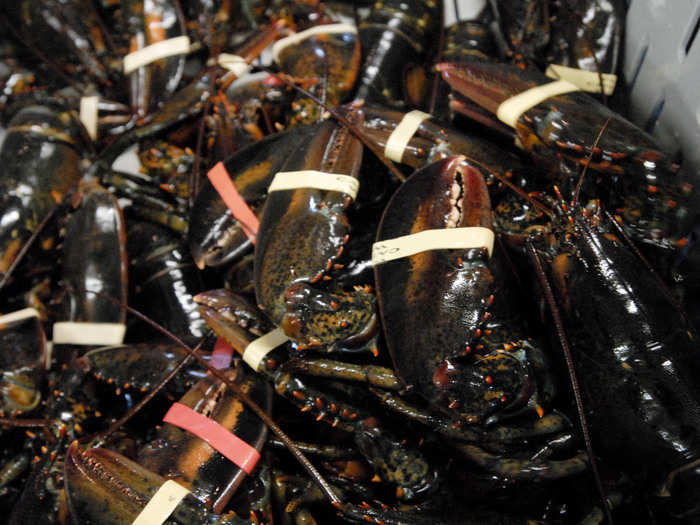
Over several decades, Maine lobstermen have adopted strict conservation techniques to ensure there will always be enough lobster to catch. This includes limits on the size of lobster, the number of traps, and the kind of gear that fishermen can use.

Lobsters must be measured with a special gauge to make sure they are "keepers."
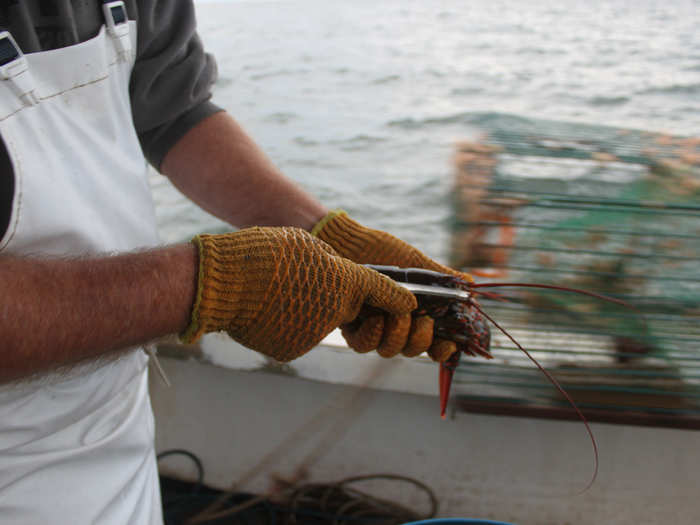
In Maine, the minimum legal size of a lobster — measured from the rear of the eye socket to the beginning of the tail — is 3 1/4 inches. The maximum size is 5 inches.
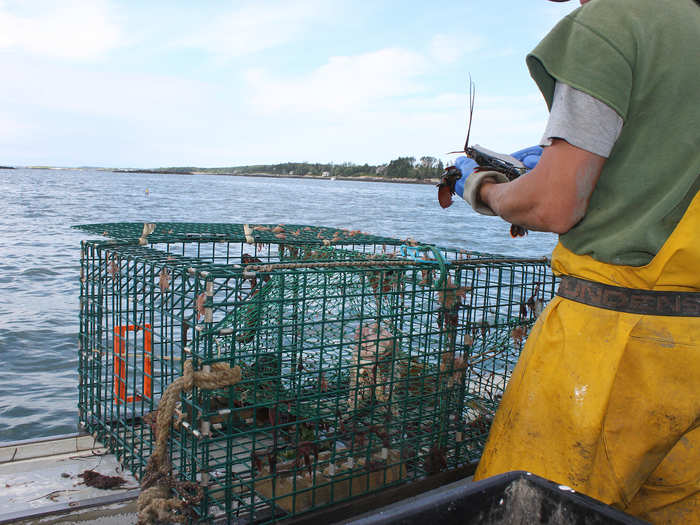
The "shorts" are thrown back and so are the oversize lobsters because they're thought to be stronger producers.
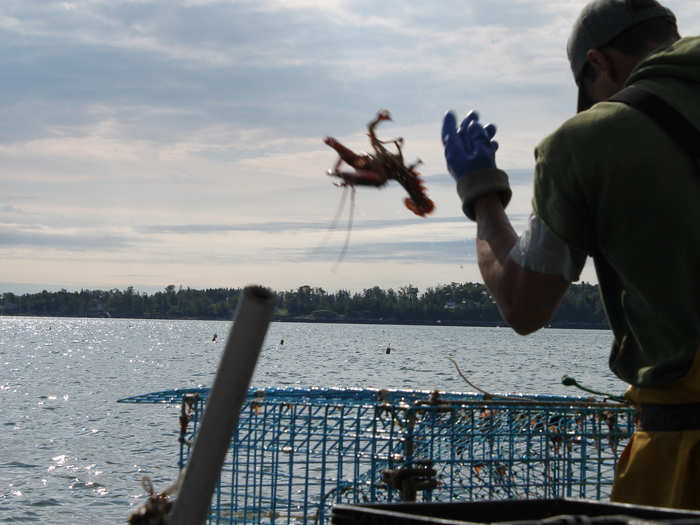
All kinds of interesting sea creatures make their way into the pots, like this prehistoric-looking fish.
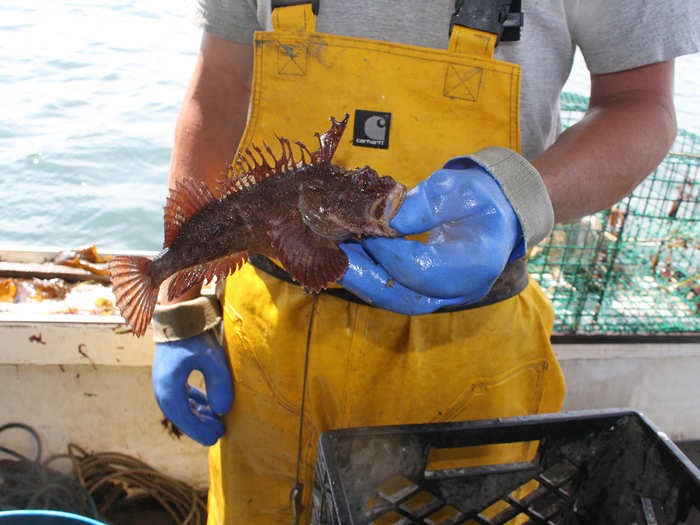
Or this giant hermit crab.
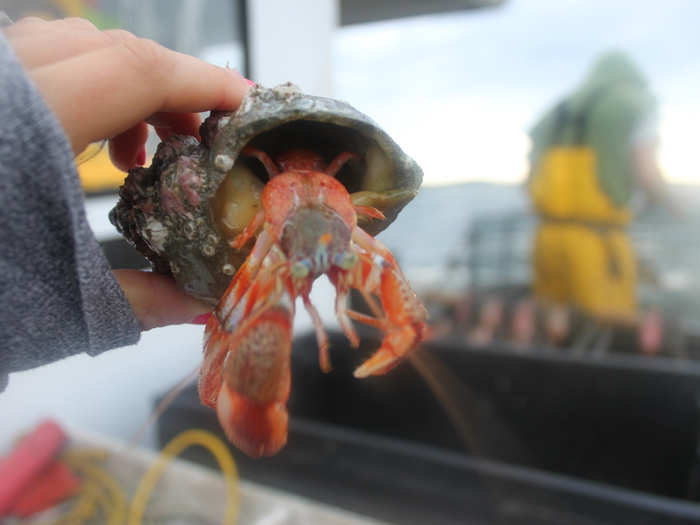
But fish, crabs, and other sea life must ultimately get tossed back to sea.
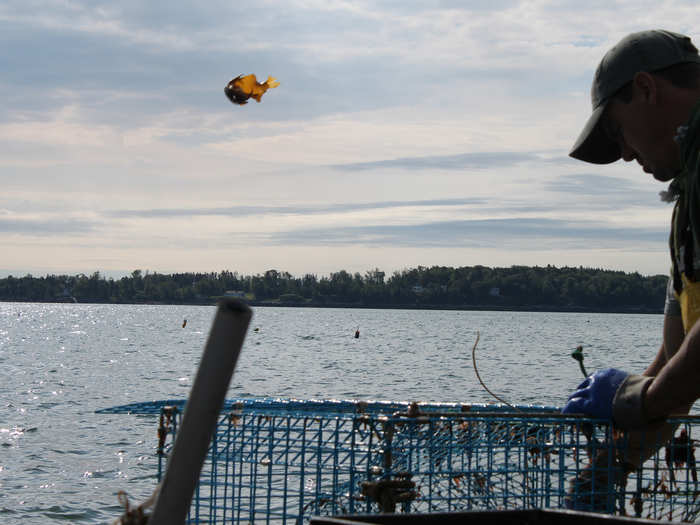
Females carrying eggs under their tails must also be released back into the ocean, after they are marked to show they are breeders.
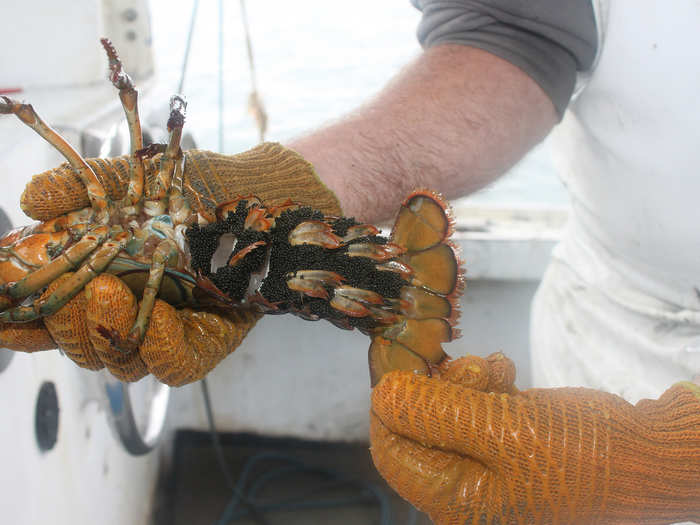
A little triangular slice, called a v-notch, is cut into the flipper using a knife or a v-notch tool. Lobstermen who keep v-notched lobsters will face a fine upward of $1,000.
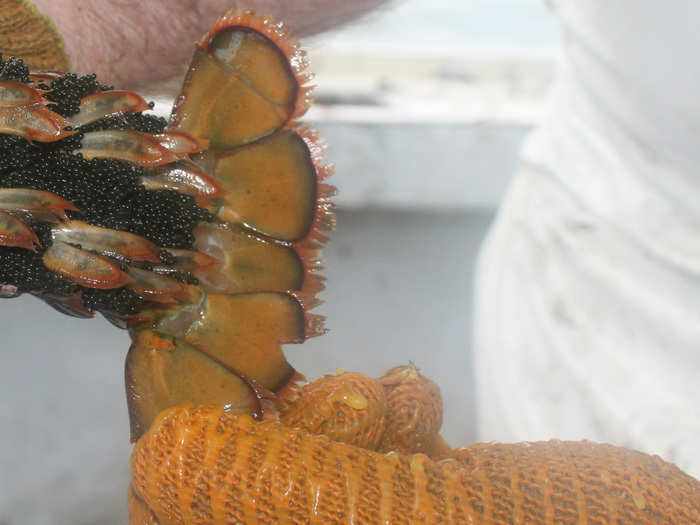
To determine the sex of the lobster, you can turn it over and look at the swimmerets, located behind the last pair of walking legs.
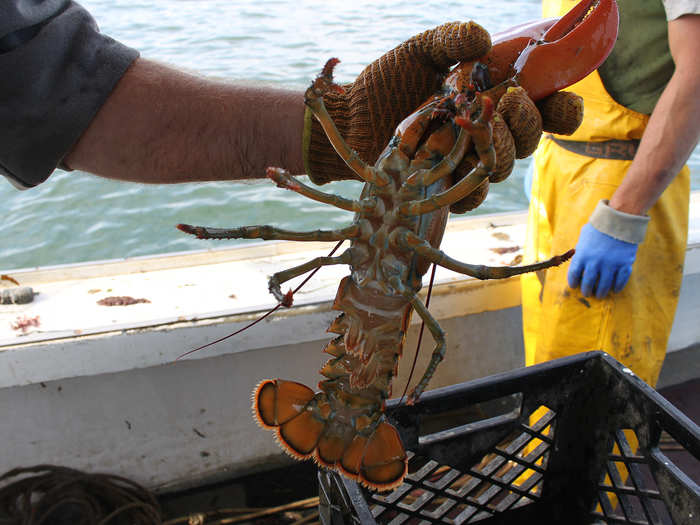
The first pair of swimmerets are hard if the lobster is male. They are soft and feathery if the lobster is female. This lobster is female.
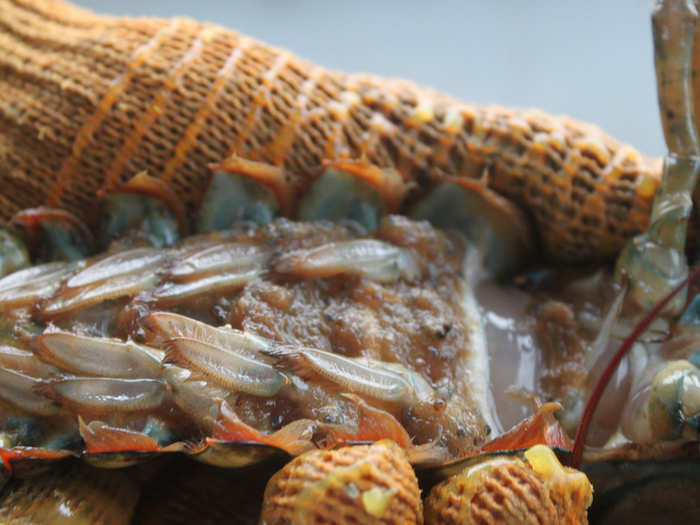
The females also have a wider tail (shown far left), which enables her to carry eggs.

After each trap is emptied, Tim replaces the bait and throws it around to the stern of the boat.
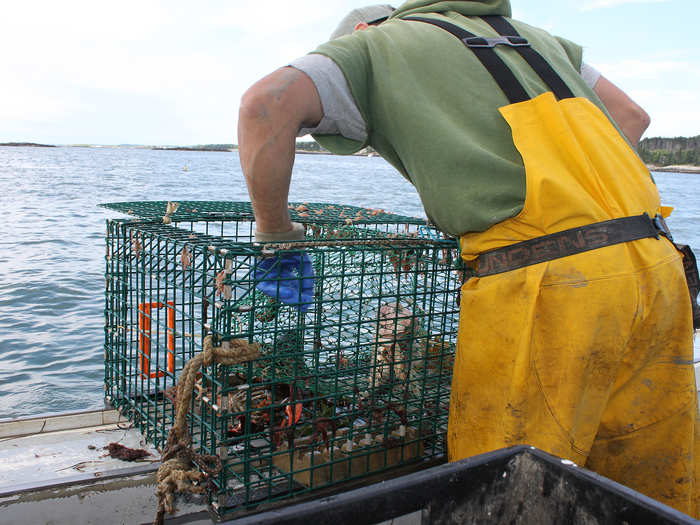
When all eight traps are pulled, Craig lowers the line into the water and the traps on the stern fly off one by one.
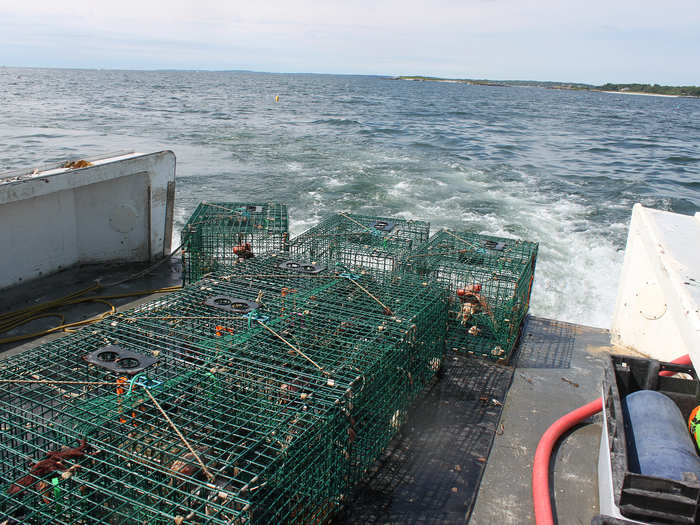
This all happens at a very rapid pace. The most important rule on a lobster boat is not to step in the rope. It's easy for the sternman to get caught in a flying line and get dragged overboard.
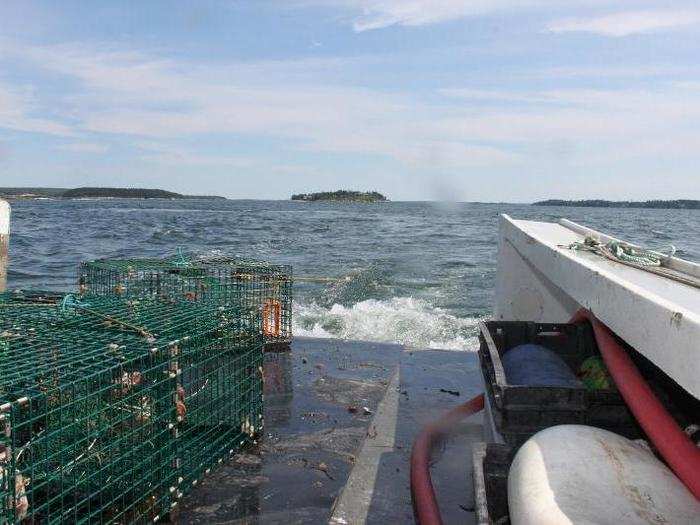
Most of these traps will sit on the bottom of the ocean overnight and get pulled up — hopefully filled with lobsters — the next day.

Lobstermen are known to be territorial. Due to the high volume of boats fishing inside of Casco Bay, lobstermen occasionally set their trap over someone else's, causing it to become tangled.
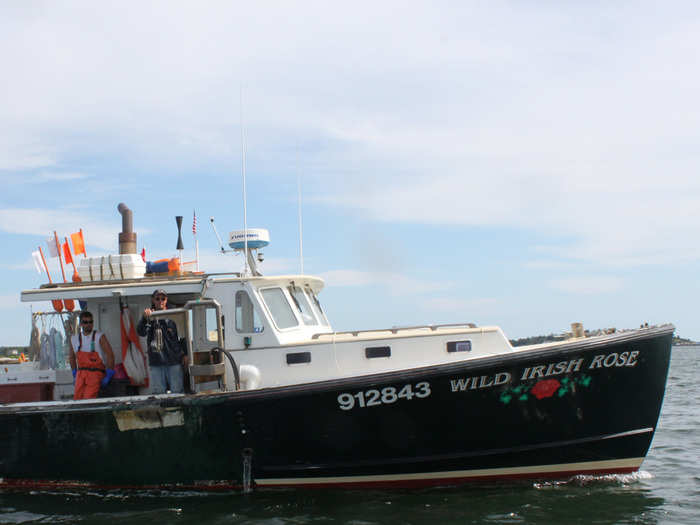
Back on the boat, the non-liberated lobsters are collected in a milk crate.
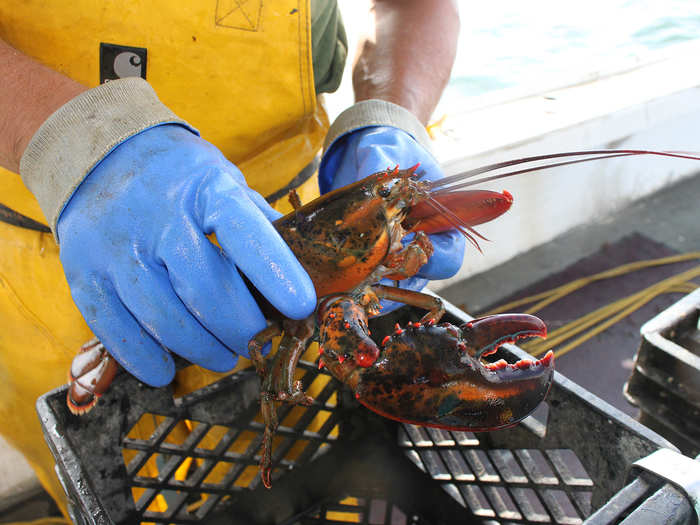
Rubber bands are slipped over the lobster's claws using a pair of pliers before they are transferred to an onboard lobster tank which can hold 730 pounds when full.

Craig wraps up the day slightly earlier than usual since they aren't catching much. He heads next to his lobster dealer, who operates from a floating dock in the Bay, to have his catch weighed.
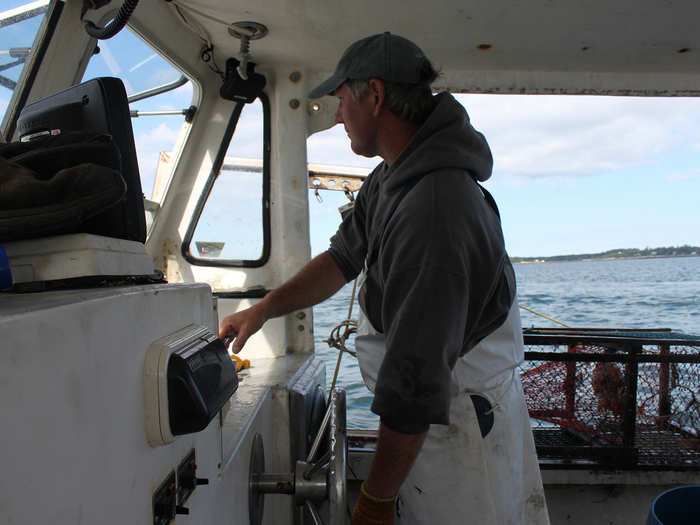
Once he arrives at the dock, the lobsters are removed from the onboard tank and packed into pallets.
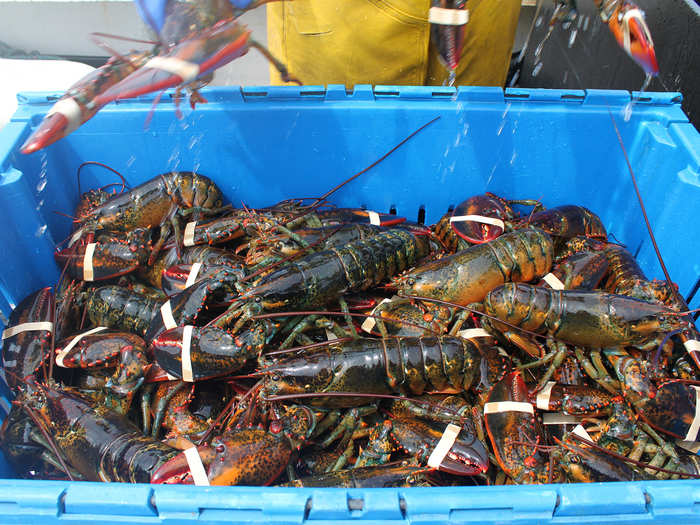
The pallets are unloaded from the fishing boat and weighed. Today's catch comes in at about 300 pounds, which is relatively low. Especially when you consider that Craig needs to catch at least 150 pounds each day just to cover gas and bait.
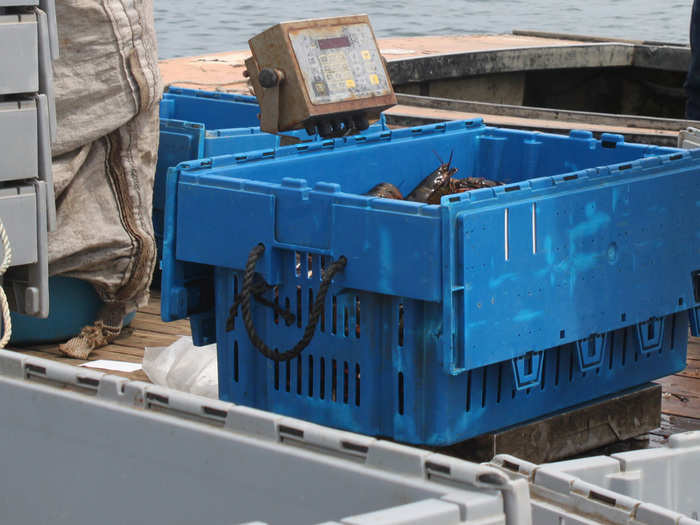
Even though the State has managed to avoid the same lobster glut that sent prices into a free fall last year, soft-shell lobsters in Portland are still only selling on the dock for around $2.75 per pound, much lower than the $3 to $4 per pound lobstermen were earning on average between the late 1990s and 2011.
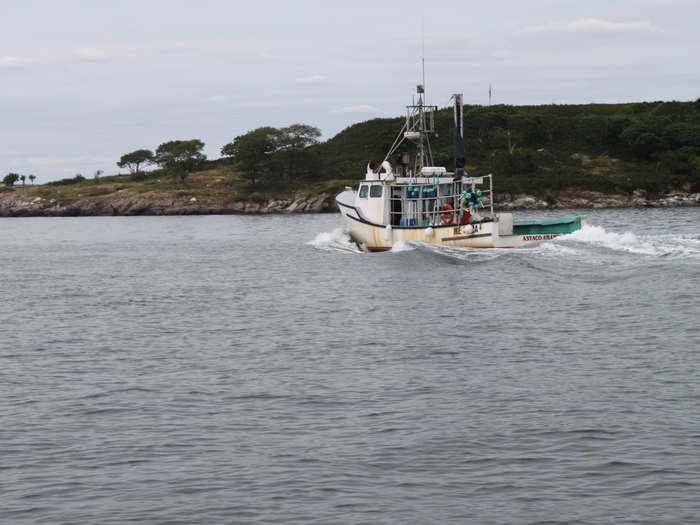
Along with fuel and equipment, the price of lobster bait — which Craig loads up on at the dealer — has been rising. Since 1980, bait prices have climbed from $35 per drum to around $180 today, a 500% gain.
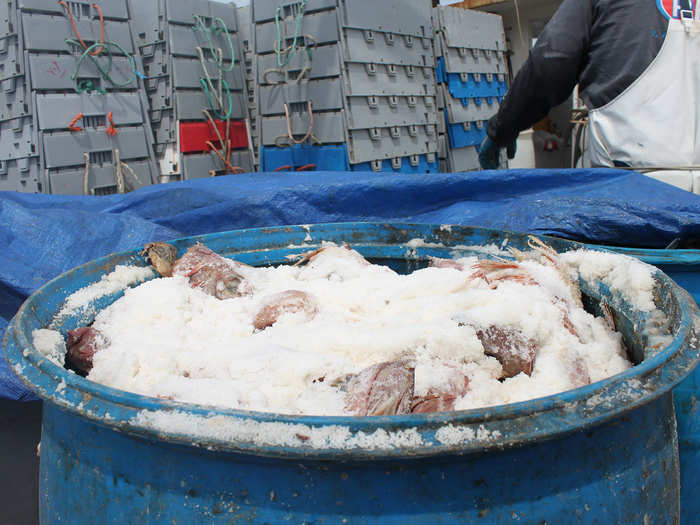
Typically, the abundance of lobster would make up for low prices. This isn't true for a lobsterman like Craig, who can't handle the higher number of traps that someone with several larger vessels would be able to manage.
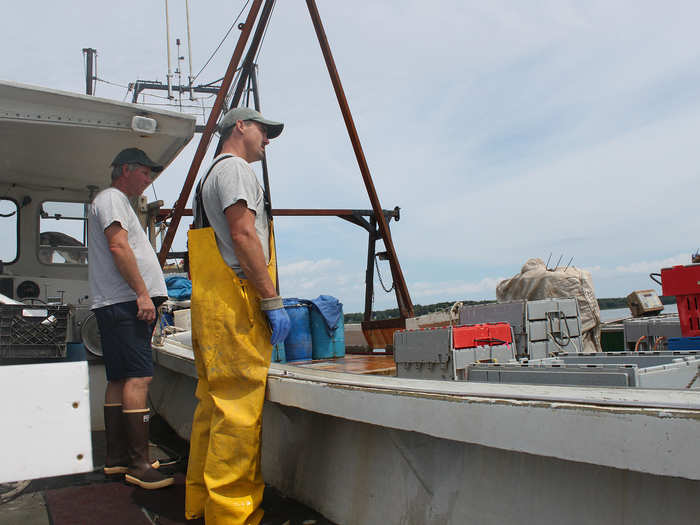
Craig also worries about diseases that could suddenly threaten lobster populations. He shows me a lobster plagued by shell disease, when bacteria eats away at the creature's shell and causes it to rot. A diseased lobster cannot be sold on the more valuable live market for obvious reasons, but may be sent to processors since the meat is still good. Although shell disease has historically been a much bigger problem in southern Massachusetts and Rhode Island, a new report shows that the nasty disease, potentially linked to warming water, is creeping north into Maine.

After bait, Craig takes home $156.60 for the day.
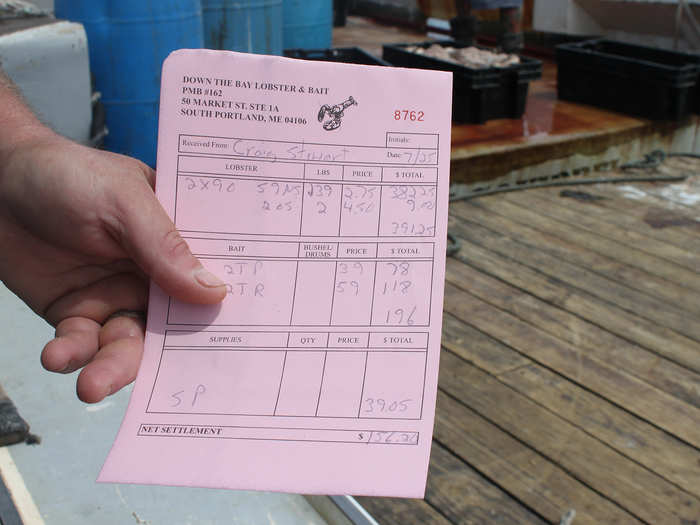
Tim gets cut 20% of the daily catch, which is typical for a sternman.
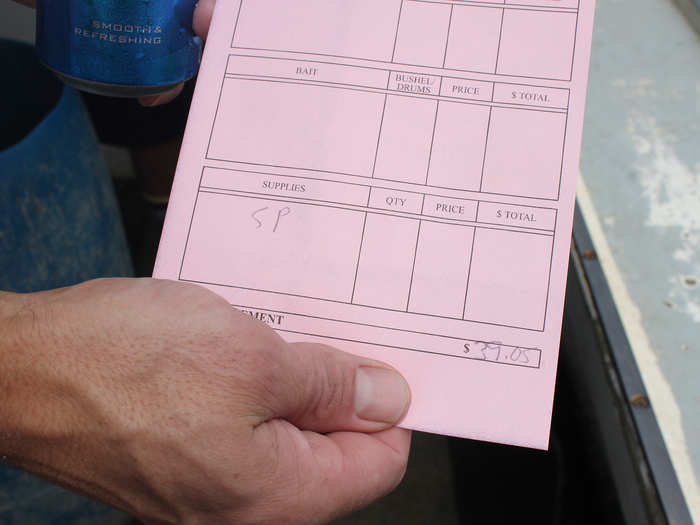
During the 1990s and early 2000s, Craig says he was able to make a year's pay in six months. That's impossible now.
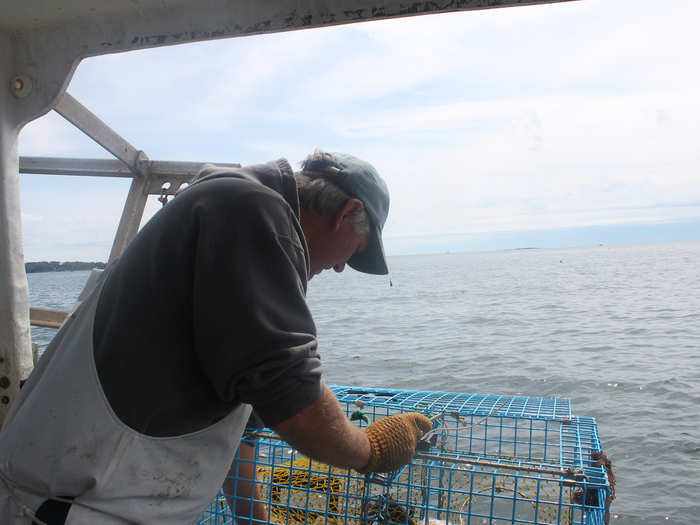
But lobstering is something that Craig would never give up."This is my way of life and I love doing it. And I'm going to keep on doing it until I can't do it anymore," he told me.

Where is all that lobster headed?
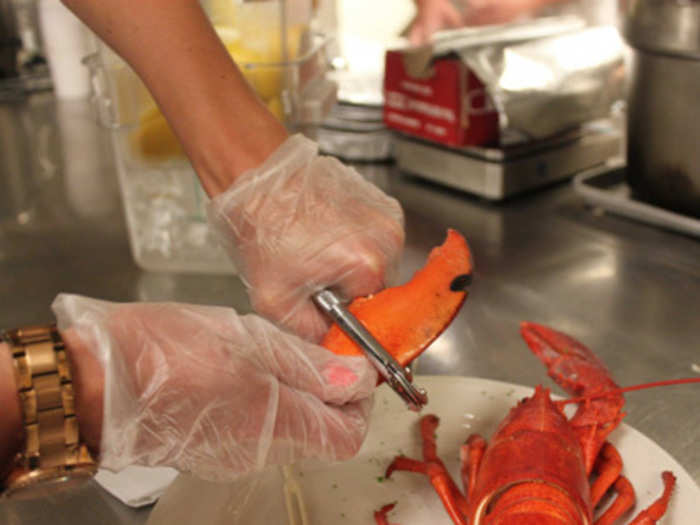
Popular Right Now
Popular Keywords
Advertisement